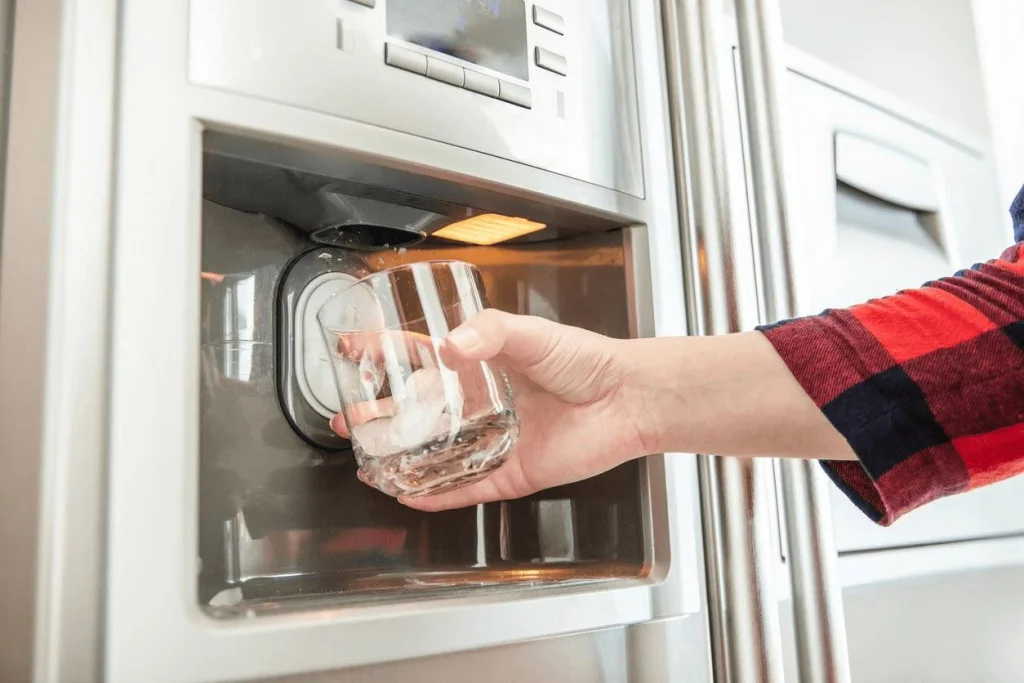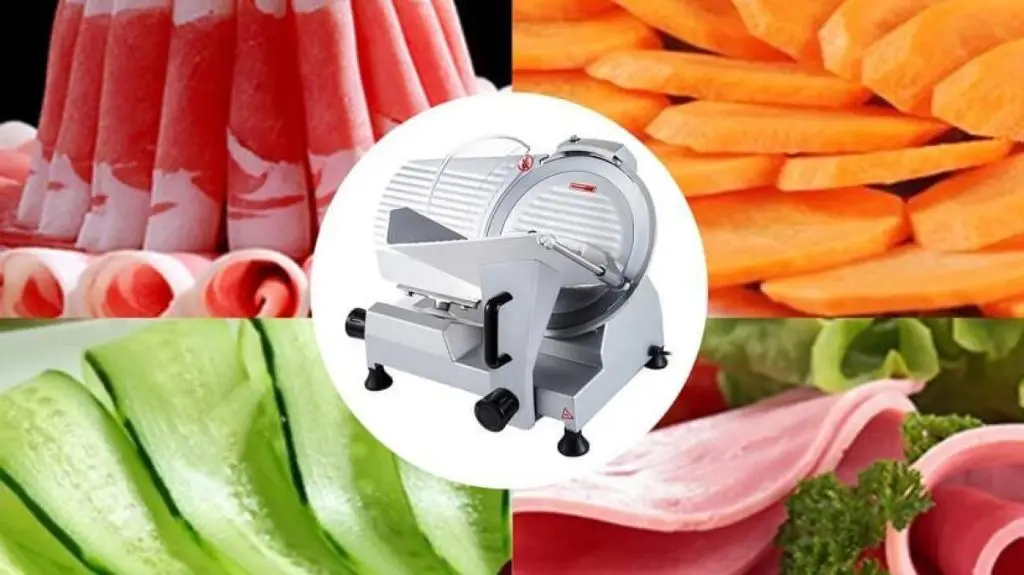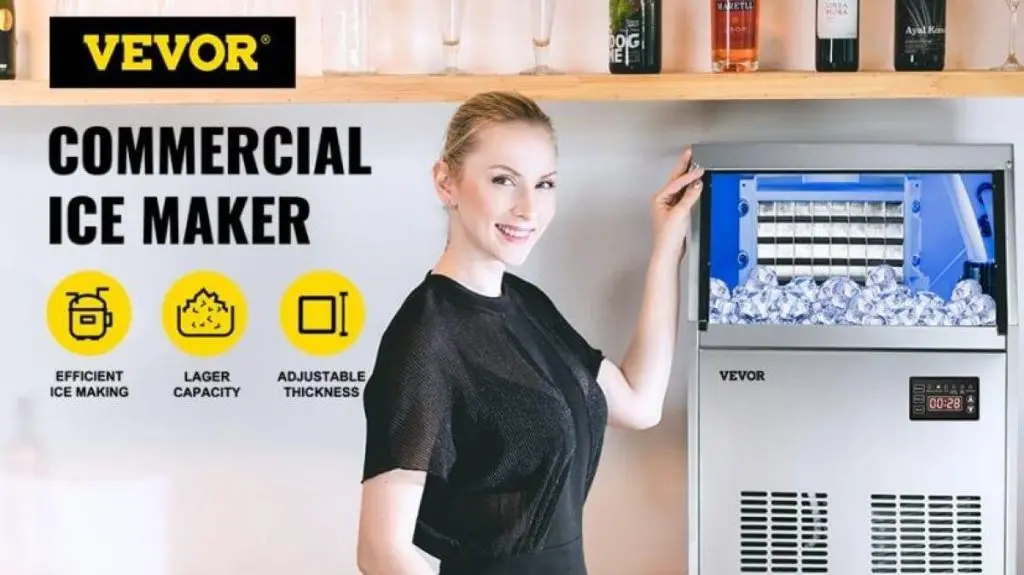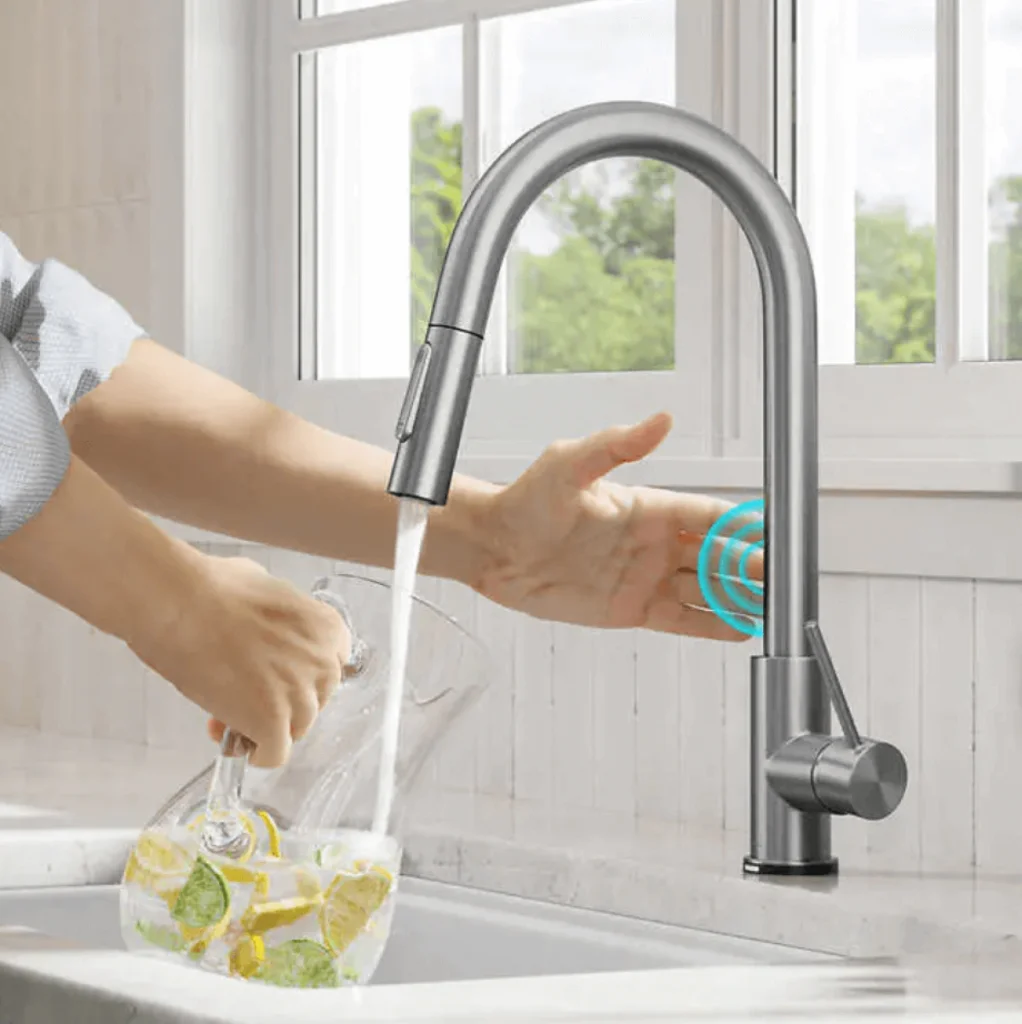Ice makers are now essential in our lives. They provide the solution to our ice needs. Whether it’s for drinks, parties, or preserving food, ice makers play a crucial role in giving us ice cubes. Have you ever wondered how these cool devices work? Have you pondered the mechanics behind how ice machines work? Let’s explore the fascinating world of making ice. We’ll look at how ice cubes are created and how commercial ice makers efficiently produce them. In this article, we will unveil the inner workings of ice makers, answering questions such as “how does an ice maker work?”

Understanding how these machines work will give you insight into how ice is made. We’ll explore the important parts of an ice maker, like how it freezes water and forms ice cubes. By knowing these details, you’ll have a better understanding of how these machines function. Get ready to dive into the world of ice makers as we unravel the mysteries behind their operations.
How Does an Ice Maker Work?
In this section, we will explore the fascinating realm of ice makers. Get ready to uncover the inner workings of these ingenious devices and answer the question: how does an ice machine work. We’ll explore how ice makers work and the process of making ice. Let’s dive into the details of these incredible machines.
Ice Maker Overview
Ice makers are intricate machines designed to produce ice cubes efficiently. Understanding how do ice makers work involves grasping the fundamental principles behind their operation. Essentially, an ice maker follows a series of steps to create ice cubes. First, water is supplied to the ice maker, either manually or through a connected water line. Then, the ice maker initiates the freezing process, utilizing refrigeration mechanisms.
As the water freezes, it forms solid ice cubes within specialized molds. Finally, the ice maker releases the frozen cubes into a storage bin for immediate use. That’s the essence of how ice maker works – transforming water into convenient, ready-to-use ice cubes.
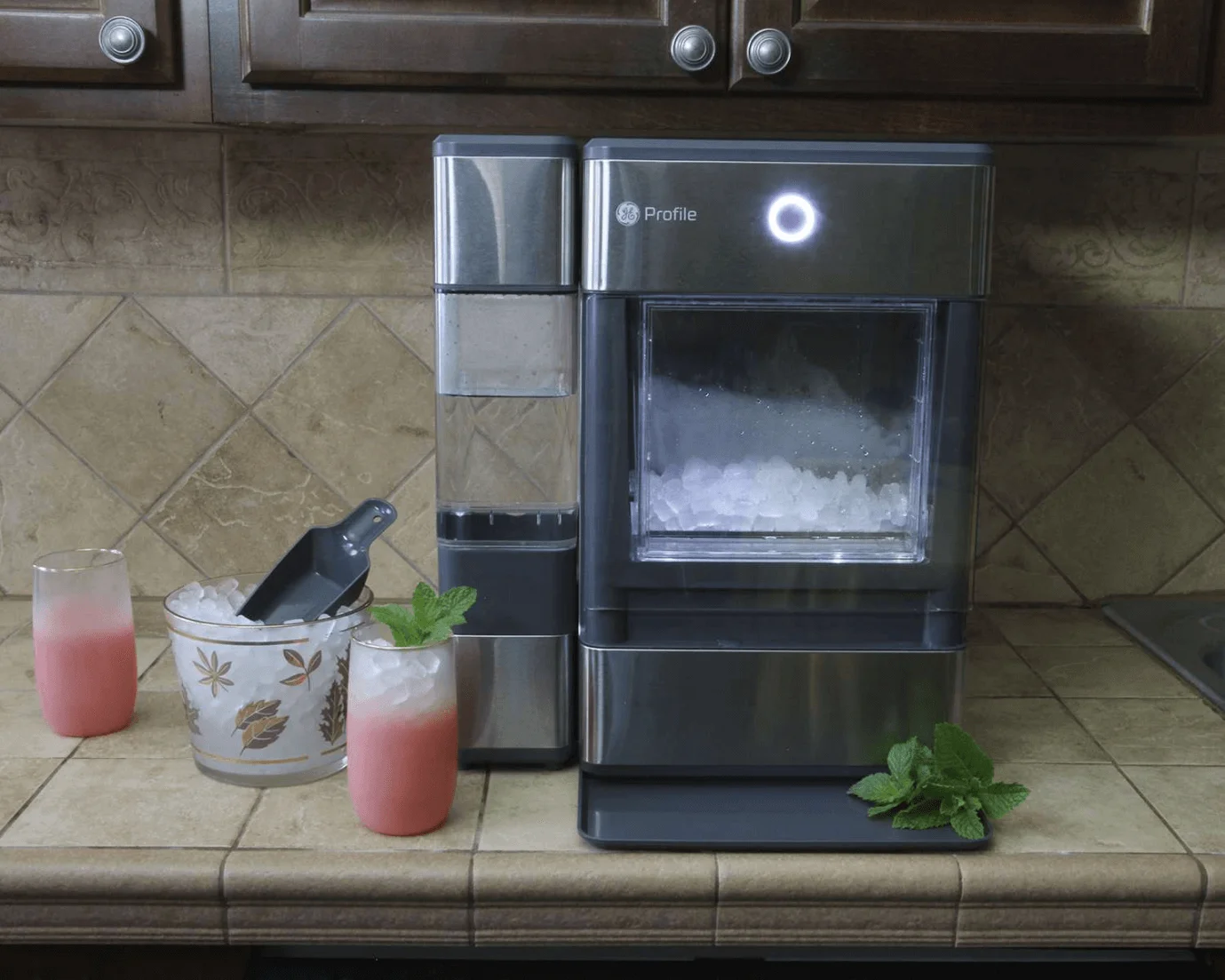
Components of an Ice Maker
To understand how does an ice maker work, it is essential to familiarize ourselves with its key components. Ice makers comprise various elements working in harmony to deliver a steady supply of ice. Let’s explore these crucial components:
1. Ice Mold and Ice Tray: The ice mold, often made of durable materials like stainless steel, is responsible for shaping the ice cubes. Water fills the ice tray within the mold, forming the desired shape and size of the ice cubes.
2. Water Valve: The water valve controls the flow of water into the ice maker. It opens to allow water into the ice mold during the freezing cycle, ensuring the ice tray is properly filled.
3. Water Pump: The water pump is responsible for circulating the water throughout the ice maker. It pumps the water from the supply line to the ice mold, maintaining a constant flow.
4. Storage Bin: Once the ice cubes are formed, they are released into a storage bin within the ice maker. This bin holds the batch of ice until it is ready for use.
5. Shut off Arm: The shut off arm, also known as the ice level sensor, monitors the ice levels in the storage bin. When the bin reaches its capacity, the shut off arm signals the ice maker to stop producing ice.
6. High Pressure and Expansion Valve: The ice maker operates based on the refrigeration cycle, where high-pressure liquid refrigerant is converted into low-pressure gas through the expansion valve. This process helps to create the necessary cooling effect for ice production.
7. Water to Fill: The water to fill mechanism ensures a consistent and measured amount of water is supplied to the ice mold. It controls the water flow to create properly formed ice cubes.

Each of these components plays a vital role in the seamless operation of an ice maker. By understanding how the ice mold, water valve, water pump, storage bin, shut-off arm, and other components work together, we gain insight into how an ice maker works and. It is the careful coordination of these components that allows us to know how does ice machine work to enjoy the convenience of a steady supply of ice whenever we need it.
Ice Maker Cycle
Understanding the ice maker cycle is crucial in comprehending how an ice maker works. This step-by-step process outlines the journey from water to frozen ice cubes, encompassing the refrigeration cycle, freezing the water, forming ice cubes, and ultimately releasing them into the storage bin. Let’s explore the intricacies of this fascinating cycle:
1. Water Intake
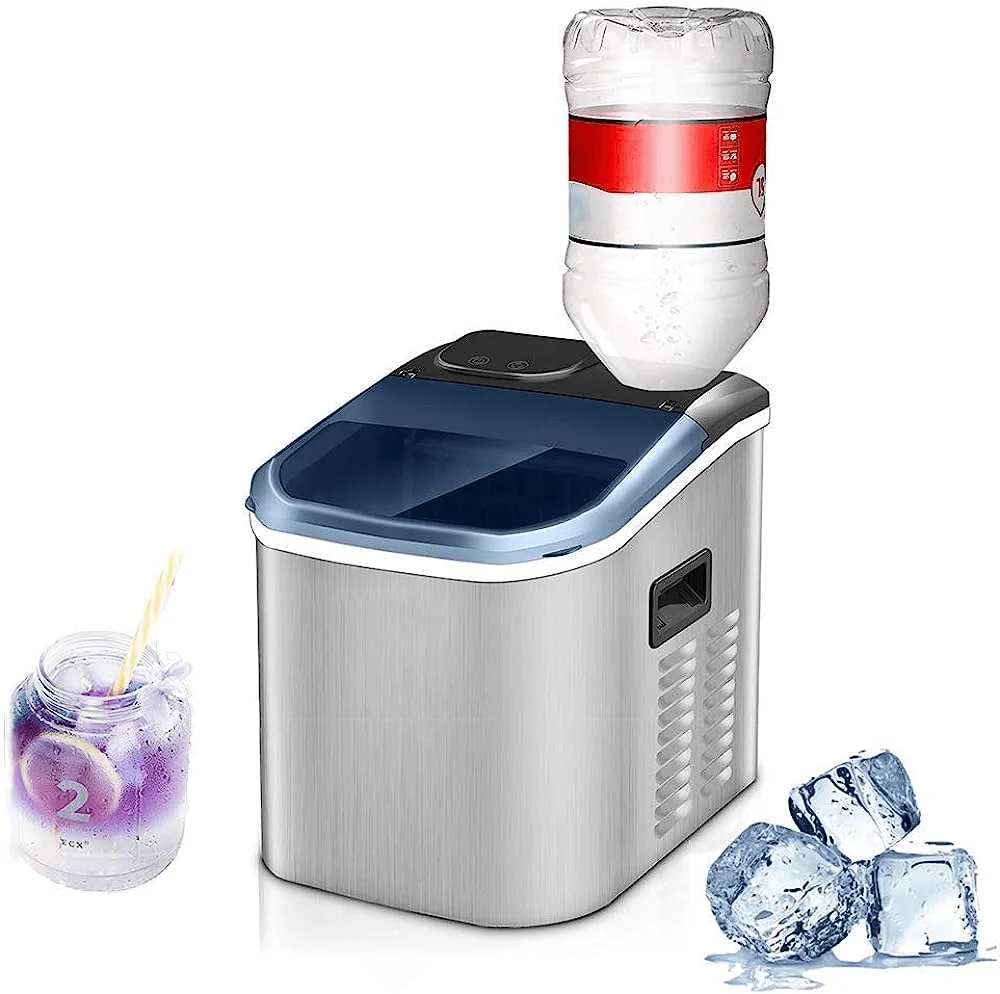
The ice maker initiates the process by taking in water from the supply line. This water is carefully regulated to ensure the proper amount is used in each ice-making cycle.
2. High-Pressure Liquid
The water then enters the high-pressure liquid section of the ice maker. Here, the water is subjected to increased pressure, which facilitates the formation of ice.
3. Freezing Process

The water flows into the ice mold, where it is exposed to freezing temperatures. The refrigeration cycle comes into play, with the high-pressure liquid refrigerant absorbing heat from the water, causing it to freeze.
4. Ice Formation
As the water freezes, it transforms into solid ice within the ice mold. The time it takes for the water to freeze and form ice cubes depends on various factors, including the temperature settings and the specific ice maker model.
5. Release Mechanism
Once the ice cubes are fully formed, the ice maker engages its release mechanism. This mechanism may involve the use of heating elements or the activation of motorized components to loosen the ice cubes from the mold.
6. Batch of Ice

The released ice cubes drop into the storage bin, accumulating as a batch of ice. The size of the batch varies depending on the ice maker’s capacity and the specific requirements of the user.
7. Shut-Off Arm Operation
In commercial ice makers or larger units, a shut-off arm is employed to monitor the ice levels in the storage bin. When the bin reaches its capacity, the shut-off arm triggers the ice maker to pause ice production until the ice level decreases.
8. Repeat Cycle
The ice maker cycle repeats itself as long as the ice maker is powered and the water supply is maintained. This ensures a continuous supply of ice cubes based on the user’s needs.
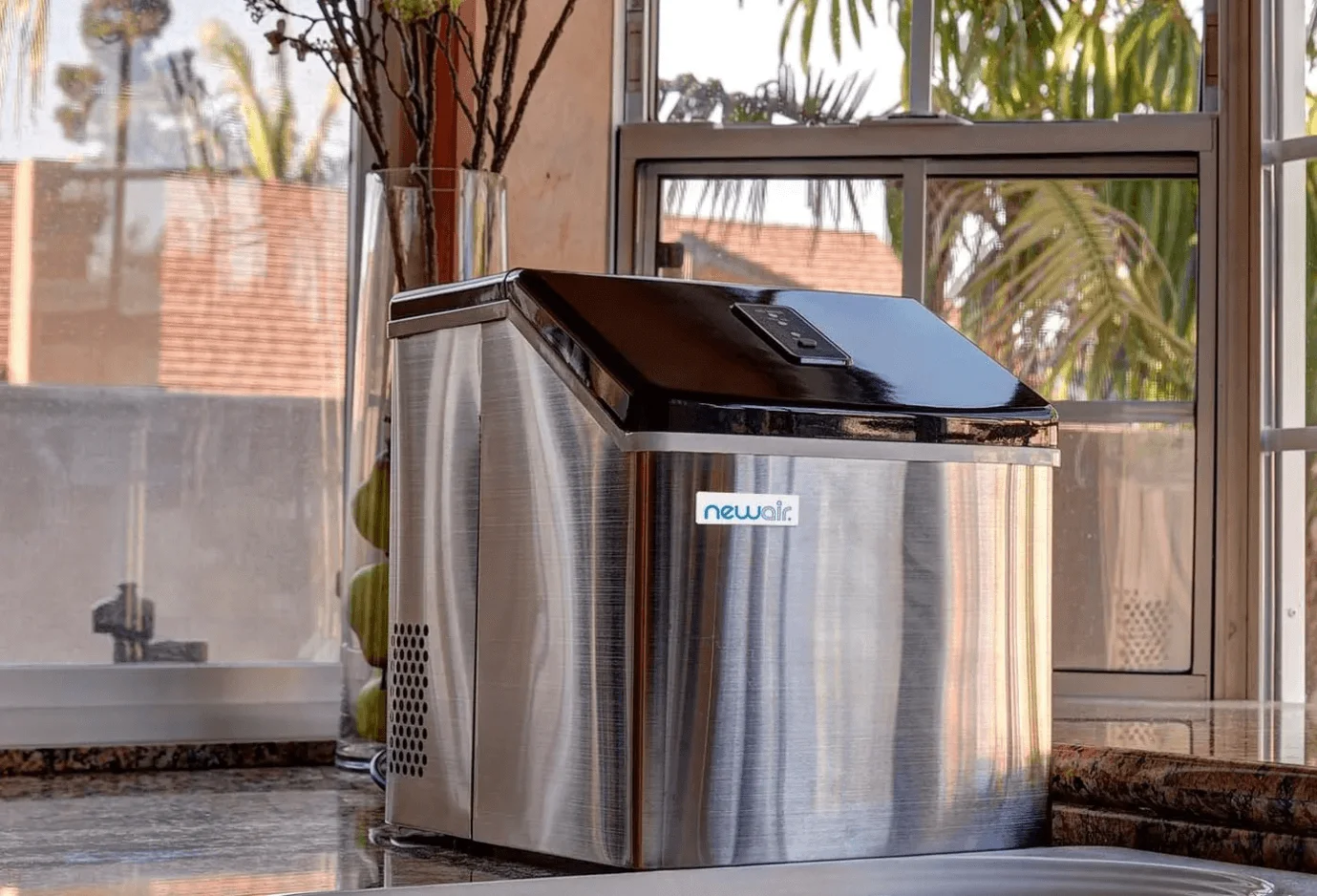
By understanding the intricate details of how ice machines work, we can appreciate the art and engineering behind the ice maker cycle. From the freezing process to the batch of ice formed, this cycle encompasses the magic of transforming water into conveniently accessible ice cubes for our everyday needs.
Working mechanisms of Different Ice Makers
Ice makers come in various types, each employing unique mechanisms to produce ice. One notable brand in this realm is VEVOR, which offers reliable and efficient ice makers. When considering how does ice maker work, it’s essential to understand the different approaches.
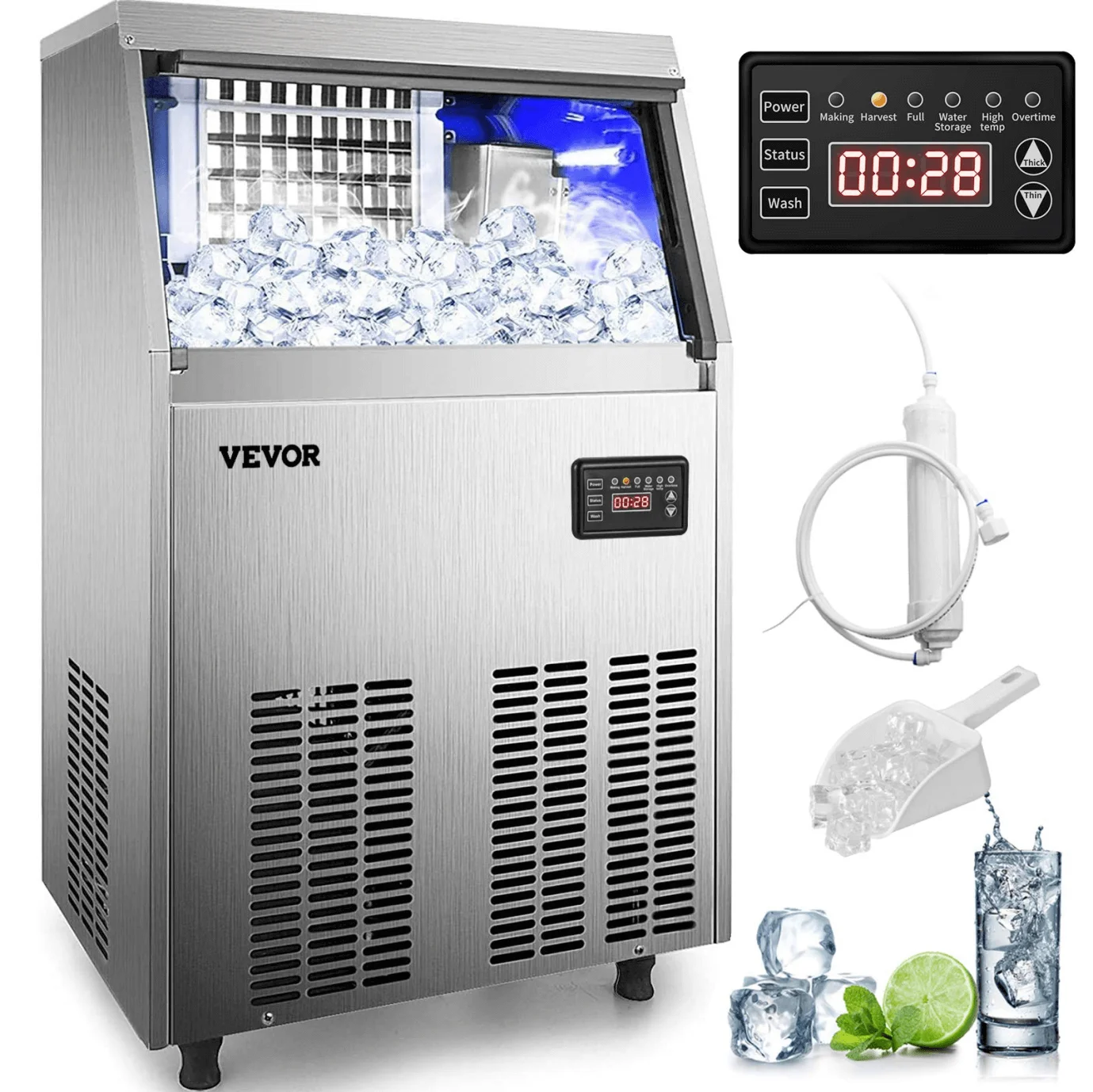
Whether it’s a traditional ice maker or a modern ice machine, the working mechanisms revolve around the fundamental principles of how does an ice machine work. VEVOR ice makers exemplify excellence in performance and demonstrate how ice machines work to meet the diverse ice-making needs of both commercial and residential settings.
Troubleshooting Tips
Understanding how ice maker works can help address common issues that may arise. Here are three essential troubleshooting tips to keep your ice maker running smoothly:
1. Check the Shut-Off Arm: The shut-off arm plays a vital role in regulating ice production. Ensure it moves freely and is not obstructed, as a stuck or improperly positioned shut-off arm can disrupt the ice-making process.
2. Inspect Water Supply: Verify that the water supply is properly connected and turned on. A lack of water or insufficient pressure can hinder the ice maker’s ability to freeze the water and form ice cubes.
3. Clean the Components: Over time, mineral deposits and debris can accumulate, affecting the ice maker’s performance. Regularly clean the ice mold, water lines, and other parts using a mild cleaner to maintain optimal functioning.
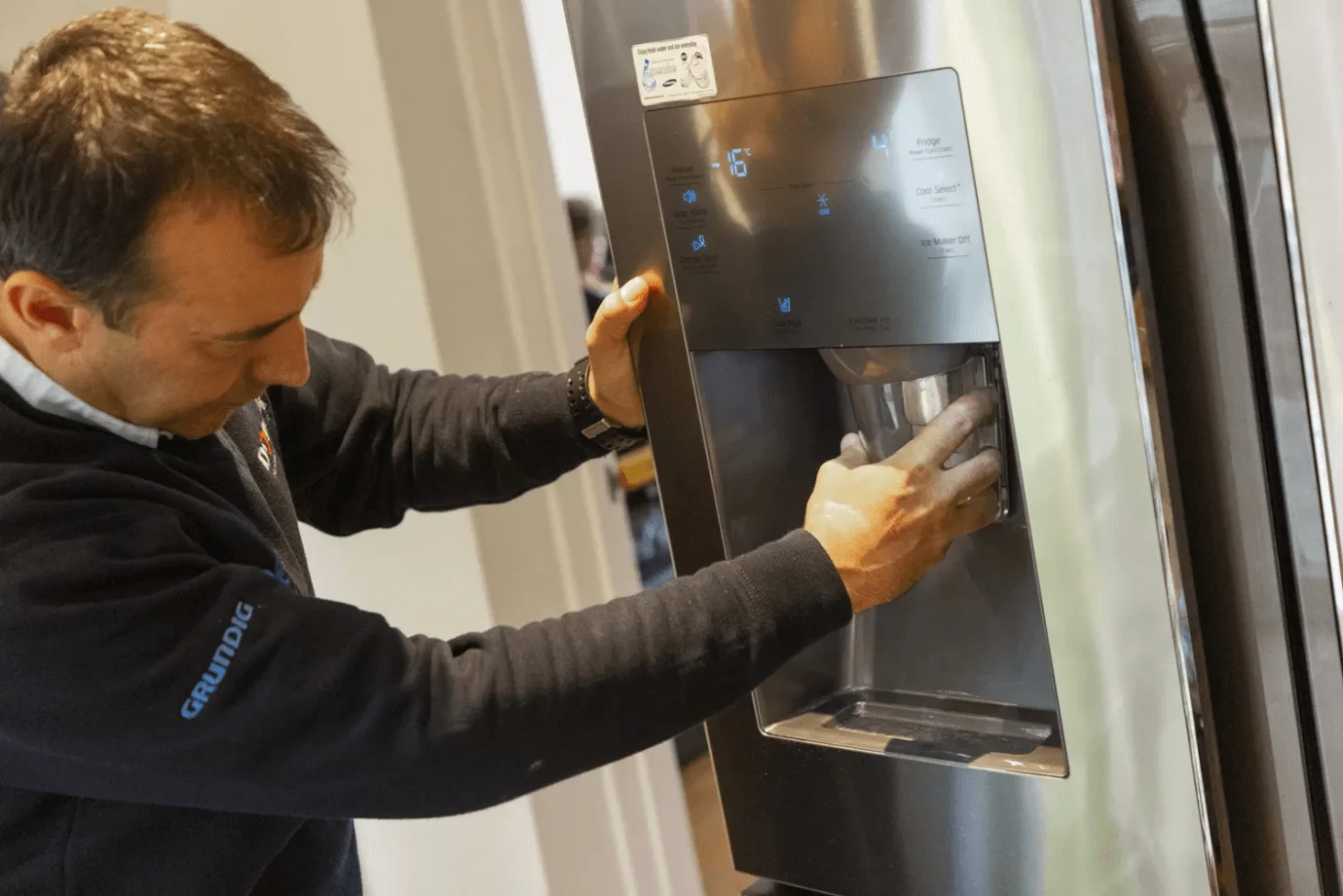
By following these troubleshooting tips, addressing issues related to the high pressure liquid, freezes the water, high pressure, and other components, you can ensure your ice maker consistently delivers a steady supply of refreshing ice cubes.
Maintenance and Cleaning
Proper maintenance and regular cleaning are crucial to keep your ice maker operating efficiently. Understanding how does a ice maker work and how icemaker works can guide you in maintaining its optimal performance. Here are key maintenance tips:
1. Clean the Shut off Arm: Regularly inspect and clean the shut off arm to ensure it moves freely. A stuck or misaligned shut off arm can disrupt the ice-making process.
2. Remove Mineral Deposits: Over time, mineral deposits can accumulate, affecting the ice maker’s performance. Clean the components exposed to high pressure liquid and those that come into contact with water to prevent blockages.
3. Sanitize and Descale: Periodically sanitize and descale the ice maker to remove bacteria, mold, and mineral buildup. Follow manufacturer guidelines to ensure proper cleaning methods that prevent the formation of ice that tastes off.
By incorporating these maintenance practices, addressing issues related to freezing the water, and maintaining the key components of your heavy-duty ice maker, you can ensure a reliable supply of clean and refreshing ice cubes.

FAQs About How Ice Makers Work
1. How often should I clean my ice maker?
It is recommended to clean your ice maker every 3-6 months, depending on usage. Regular cleaning helps maintain optimal performance and ensures the production of clean and fresh-tasting ice cubes.
2. Why is my ice maker not producing ice?
There are a few reasons why your ice maker might not be working. It could be due to a clogged water line, not enough water, or a broken part. Check the water line, make sure water is flowing correctly, and refer to the manufacturer’s guide for help with troubleshooting.
3. How can I improve the quality of ice produced?
To enhance ice quality, use filtered water to minimize impurities. Regularly clean the ice maker to remove mineral deposits. Additionally, ensure proper ventilation around the ice maker and maintain recommended temperature settings for optimal ice production.
Conclusion
Ice makers have become essential appliances that cater to our need for ice cubes. These machines enable us to enjoy cold drinks, store food, and enhance our dining experiences. Understanding their working principles, components, and ice maker cycle gives us insight into their amazing technology.
By following troubleshooting tips, regular maintenance, and cleaning routines, we can ensure their long-lasting performance. Whether in commercial establishments or homes, ice makers play a crucial role, providing a convenient and continuous supply of ice to enhance our daily lives.

